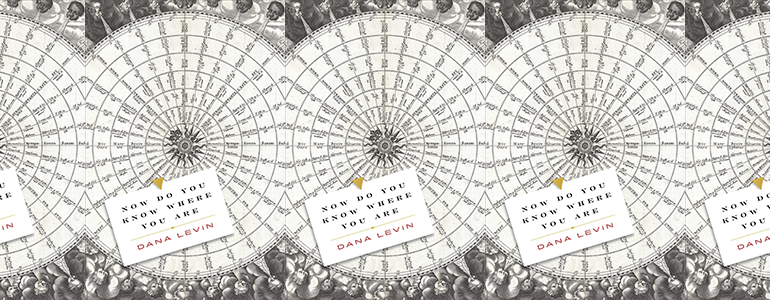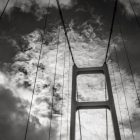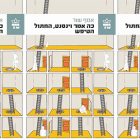Language and Time in Now Do You Know Where You Are

“What elegy is, not loss but opposition. By any means necessary being the only directive I can adhere to with any consistency.” This is the poet C.D. Wright speaking from her 2005 hybrid-essay Cooling Time: An American Poetry Vigil. Censuring aesthetic camps that have divided the business of poetry into supposedly formal concerns—while acknowledging the political allegiances that shifted those divisions in the first place—Wright updates the Horatian dictum for twenty-first century America: “Poets should exceed themselves—when demands on us are slack, we should be anything but.” In the years since 2005, in pandemic months marked by insularity, exceeding oneself may have been revealed as a different kind of task, more challenging, more important. Perhaps the first step for a poet to exceed themselves is to figure out where, in what context, that exceeding takes place.
“Now Do You Know Where You Are,” the title poem of Dana Levin’s fifth collection, out earlier this year, is an elegy for Wright, who died suddenly in 2016. “When we met, many years ago, we talked about getting located. You were a practitioner of deep coordinates, writing from the intersection where eternal forces meet history and place.” At this intersection, where the potential for exceeding oneself seems to become possible, Levin thinks about motion, an experience in time that poems make happen for their readers:
“Now do you know where you are?”
I’ve been hearing you say that for months. You say it at three different junctures in Deepstep Come Shining.
Dear C.D. Wright, I don’t know where I am, but you are helping me to get there.
Spirit I only met once.
The question isn’t asked for an answer. I am here, and you are either here or there. The question is asked to be repeated in new contexts, new lives—or as Levin suggests after reading Wright’s work, three different iterations of now. Elegy is not loss but opposition.
What about now? The elder American poet guides, in some manner of the word, the younger American poet through the act of writing poems, which is almost like real life. Now Do You Know Where You Are is a book that prods this person writing the poems, whose practical tools (sentences) have figurative utility (experience). The first poem, “A Walk in the Park,” considers an object, something anyone can visualize, yet immediately in the supercharged terms of metaphor: “To be born again, you need / an incarnation specialist,” and this specialist is actually “a team / from the Bureau of Needles / to thread you through” your life reincarnated. Here is the needle and thread: the practical tools with metaphorical possibility. Once the poet visualizes them, though, once the poet remembers them as objects on a surface, that possibility is called into question: “What / did it actually do, how / did a spindle look / in real life?” Here is another question asked for no answer; the experience of not-knowing is more important than the articulate description of a spindle. These “fairy-tale” items, the objects that could “put a kingdom / to sleep”—in this moment they exist only in the way language makes them possible. The poet embraces impossibility: “I didn’t know. As with / so many things: / there was a fact and there was / a believed-in dream…”
If the dream is a function of belief—and because one does not come to poetry for data, for information better suited to a manual for assembling a spindle—these poems, in the process of being made, teach their maker how to believe in language enough to keep writing. Written between 2016 and 2020, characteristic of their era, the poems of Now Do You Know Where You Are deal with their own stop-and-start making—not quite writer’s block, but a mid-life transformation one goes through silently—and on the opposite end of that silence, writing happens. The poet makes a promise—“Pledge: to write every day for twelve weeks about your feeling (blech)”—and the need for a pledge, perhaps, signals a habit-forming process: acknowledging one’s feelings (blech), then reshaping those feelings into a different medium, sentences on the page sometimes arranged in lines, sometimes arranged as narratively-fragmented prose. Sometimes prose poems suddenly erupt into lineated verse (Levin often takes the lead from an English approximation of the Japanese haibun); sometimes lineated poems condense themselves back into considered prose. Between these transformations, an intermittent silence of process situates the poet to interpret her own work in the time it takes to ask the book’s first question—and now do you know where you are?—as she commands in the final lines of “Instructions for Stopping”:
Write Stop.
Put a period at the end.Decide if it’s a kiss
or a bullet.
Disguised as an imperative, here is another question the poet asks herself, a repetition to mark stages of process. What if the period is both kiss and bullet? What if the period is neither? The figurative shape of the period, bullet or kiss, does not change the sentence that comes before it. This is not a typographical anxiety but a syntactical magic trick: by focusing on the period, over and again one’s attention returns to the command and its implied subject. You must write stop, then put a period at the end. Just as the poem begins with a vocalization of that very subject—“Say Stop. // Keep your lips pressed together / after you say the p”—or as the poem later wonders about the value of the question itself—“how should you apply / your breath?”—the poem guides its readers through its making in real time: an experience on the page, an experience in our minds.
Because something happens when we read the poem—because time doesn’t merely pass but replicates itself—these poems simulate how, exactly, the poet struggles with and through her intermittent silence between these pages, the imitative commands she gave herself to trick language from that period. This is not without the help of others, trusted friends, poets, chiropractors. In “How to Hold the Heavy Weight of Now,” she learns how to make what she calls “an offering” from a nameless teacher: “She said, ‘You just made this gesture with your body—’ and opened her arms as if she could barely fit them around an enormous ball.” The enormous ball is there, almost situated in the reader’s minds. Like the poet who needs to be reminded that she “just made this gesture,” we’ve done this before: we’ve read a poem and visualized, at the end of our minds, the enormous ball. “‘Make that shape again,’ she said, and so I did. ‘Now let it change,’ she said, and I did.” Something stays the same, then suddenly, it changes; through a habitual practice of change, Levin wrought a book from silence.
Before the book’s final poem, the elegy for C.D. Wright from which the collection takes its title, Levin imagines a restricted site of renewal in “Into the Next Eden”: “I was supposed to go back to the sea / but plague prevented me.” Because of the plague, the process of return is gradual, inflected by small changes in how lines organize a sentence, at what point the impossibility of but is introduced: “I was supposed to back to the sea but nature / prevented me.” The poet makes progress, and this slow return gives everyone—poet and reader—the time to think about sudden change; to feel and articulate “how some things you are happy to see again / when you return, // like the sea”; to return by any means necessary to the impossible beginning.



